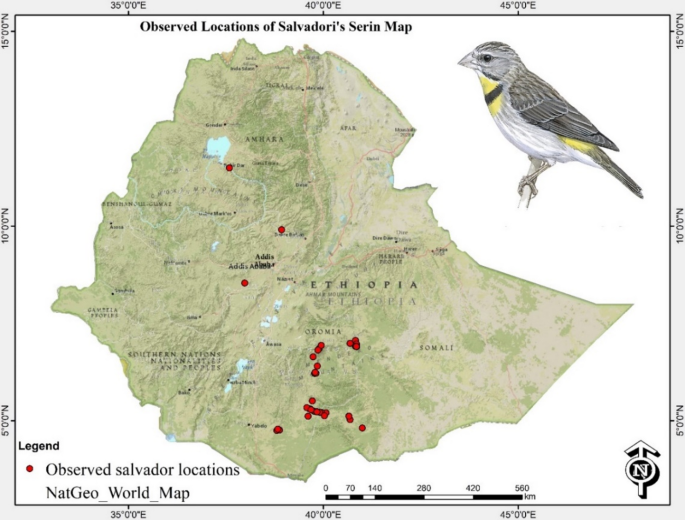Financial Markets Integrating Climate Risk in Alignment with Sustainable Development Goals
Impact on Corporate Cost of Capital and SDG 13 (Climate Action)
Recent analysis indicates that financial markets are actively pricing physical climate risk into corporate valuations, a development that directly supports the objectives of Sustainable Development Goal 13 (Climate Action). Research demonstrates that a company’s exposure to climate-related physical hazards has a measurable impact on its cost of capital.
- Companies with higher exposure to physical climate risks face a premium of +22 basis points (bps) in their Weighted Average Cost of Capital (WACC).
- This premium is calculated per +10 point increase in a company’s climate risk score and is considered statistically significant (p-value < .001).
- The analysis assessed 10 specific climate hazards, including tropical cyclones, heat stress, and flooding, which pose direct threats to the resilience of infrastructure and communities, aligning with the aims of SDG 9 (Industry, Innovation and Infrastructure) and SDG 11 (Sustainable Cities and Communities).
- These findings suggest that capital markets are factoring the potential costs of climate adaptation into risk premia, thereby incentivizing corporations to invest in more resilient assets and operations.
Sectoral and Regional Disparities in Risk Pricing
The financial impact of climate risk is not uniform across all sectors or regions, highlighting areas where targeted action is needed to foster sustainable economic growth (SDG 8) and resilient infrastructure (SDG 9).
- Materials Sector: This sector, critical for industrial development, saw the most significant impact, with an average WACC uplift of +56 bps per +10 point increase in physical risk.
- Utilities Sector: As a provider of essential services, the utilities sector experienced an average WACC increase of +45 bps, underscoring the vulnerability of critical infrastructure to climate change.
- Emerging Markets: The pricing effect was most pronounced in developing regions, with Latin America showing a +94 bps premium and Asia a +25 bps premium. This reflects the heightened vulnerability of these economies and reinforces the need for international cooperation and climate finance under SDG 17 (Partnerships for the Goals).
The analysis indicates that this risk pricing is applied at the firm level rather than as a broad country-risk premium, suggesting a sophisticated market response to company-specific climate vulnerabilities.
Climate Sensitivity, Stock Mispricing, and Investor Awareness
A separate study corroborates the financial materiality of climate change, revealing a systematic mispricing of stocks based on their sensitivity to temperature changes. This market inefficiency poses risks to long-term economic stability (SDG 8).
- Firms whose performance is highly sensitive to temperature changes were found to be consistently overvalued, less profitable, and generated lower-than-expected returns over a 50-year period.
- This suggests that the broader market underestimates the financial impact of rising global temperatures, a key concern of SDG 13.
- The sectors most sensitive to these risks include agriculture and energy, which are central to SDG 2 (Zero Hunger) and SDG 7 (Affordable and Clean Energy), respectively.
- Notably, local investors familiar with regional climate conditions were more likely to accurately price these temperature-related risks into their valuations.
Data Gaps as a Barrier to Sustainable Finance and SDG 17 (Partnerships for the Goals)
The effective integration of climate risk into financial decision-making is hampered by significant data limitations. The Network for Greening the Financial System (NGFS) has identified this as a critical barrier to managing portfolio risk and advancing sustainable finance.
- Financial institutions currently lack sufficient access to granular, asset-level data detailing corporate exposure to physical climate risks.
- A particularly significant information gap exists regarding the extent of insurance coverage companies hold against climate-related damages.
- Closing this data gap is essential for accurate risk assessment and requires enhanced corporate disclosure and collaboration between regulators, data providers, and financial institutions, embodying the multi-stakeholder approach championed by SDG 17.
1. Which SDGs are addressed or connected to the issues highlighted in the article?
-
SDG 13: Climate Action
This is the most central SDG. The article is entirely focused on the financial implications of physical climate risks, such as tropical cyclones, heat stress, and flooding, which are direct consequences of climate change. It discusses how markets are beginning to price these risks, which is a key aspect of adapting to and mitigating climate impacts.
-
SDG 9: Industry, Innovation and Infrastructure
The article specifically mentions that “asset-intensive sectors with typically higher property, plant and equipment values are more exposed.” It highlights the materials and utilities sectors as being most affected. This directly relates to the resilience of industrial infrastructure to climate change.
-
SDG 8: Decent Work and Economic Growth
The analysis of how climate risk affects firms’ cost of capital (WACC) and stock market returns speaks to broader economic stability. The article notes that firms sensitive to temperature changes are “less profitable” and that mispricing these risks can lead to market inefficiencies (“consistently overvalued and deliver lower-than-expected returns”), which can undermine sustainable economic growth.
-
SDG 17: Partnerships for the Goals
The article draws on research and analysis from multiple stakeholders, including a private financial data company (Bloomberg), academic researchers (University of Exeter), and an influential body of central banks (Network for Greening the Financial System – NGFS). This collaboration between the private sector, academia, and public institutions is essential for addressing complex global challenges like climate change.
2. What specific targets under those SDGs can be identified based on the article’s content?
-
Target 13.1: Strengthen resilience and adaptive capacity to climate-related hazards and natural disasters in all countries.
The article’s core finding that markets are pricing physical climate risk into a firm’s cost of capital is a market-based mechanism that incentivizes companies to strengthen their resilience. Firms with higher exposure to hazards like flooding and cyclones face higher financing costs, creating a financial imperative to improve their adaptive capacity.
-
Target 13.3: Improve education, awareness-raising and human and institutional capacity on climate change mitigation, adaptation, impact reduction and early warning.
The research from Bloomberg and the University of Exeter serves to improve the institutional capacity of financial markets to understand and price climate risk. The finding that “sell-side equity analysts were found to misjudge the impact of temperature” highlights a clear gap in awareness and capacity that this research aims to address. The NGFS paper calling for better data further underscores the need to build institutional capacity for managing these risks.
-
Target 9.1: Develop quality, reliable, sustainable and resilient infrastructure, including regional and transborder infrastructure, to support economic development and human well-being.
The article’s focus on the impact on “materials and utilities sectors” directly relates to the resilience of critical infrastructure. The higher WACC for these sectors indicates that investors are demanding a premium for the risk that their physical assets (property, plant, and equipment) are not resilient to climate impacts.
3. Are there any indicators mentioned or implied in the article that can be used to measure progress towards the identified targets?
-
Weighted Average Cost of Capital (WACC) premium for climate risk
The article explicitly quantifies this indicator: “a +22 basis point (bps) premium in their Weighted Average Cost of Capital (WACC)” for companies with higher physical risk exposure. This can be used to measure the extent to which financial markets are pricing in climate risk, reflecting progress in institutional capacity (Target 13.3).
-
Firm-level stock market returns
The article mentions that a strategy of buying low-sensitivity stocks and shorting high-sensitivity ones “generated an annualised, risk-adjusted return of 4.1%”. The performance differential between climate-resilient and climate-vulnerable firms is an indicator of the market’s valuation of climate risk and corporate resilience (Target 13.1).
-
Profitability of companies sensitive to temperature changes
The finding that “companies whose performance is more affected by temperature changes are less profitable” suggests that corporate profitability can be used as an indicator to measure the real-world financial impact of climate change on businesses (Target 13.1).
-
Availability of asset-level exposure and insurance data
The NGFS paper’s conclusion that “financial institutions don’t have access to sufficient information about companies’ asset-level exposures” and the “gap in the level of visibility on insurance coverage” implies that the availability and quality of this data is a crucial indicator. An increase in the disclosure of such data would measure progress in institutional capacity to manage climate risk (Target 13.3).
4. Table of SDGs, Targets, and Indicators
| SDGs | Targets | Indicators |
|---|---|---|
| SDG 13: Climate Action |
13.1: Strengthen resilience and adaptive capacity to climate-related hazards.
13.3: Improve education, awareness-raising and human and institutional capacity on climate change. |
|
| SDG 9: Industry, Innovation and Infrastructure | 9.1: Develop quality, reliable, sustainable and resilient infrastructure. |
|
| SDG 8: Decent Work and Economic Growth | (Implied) Promote policies for sustainable economic growth. |
|
| SDG 17: Partnerships for the Goals | 17.17: Encourage and promote effective public, public-private and civil society partnerships. |
|
Source: ipe.com







